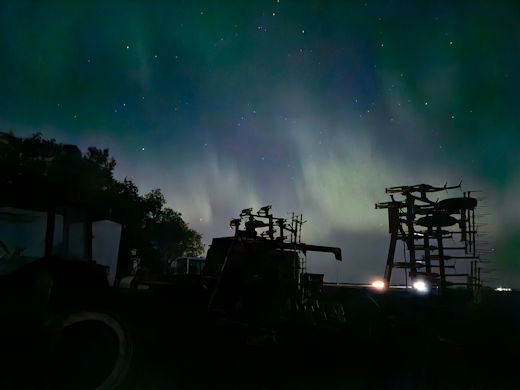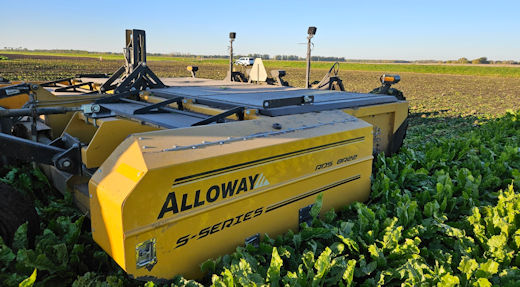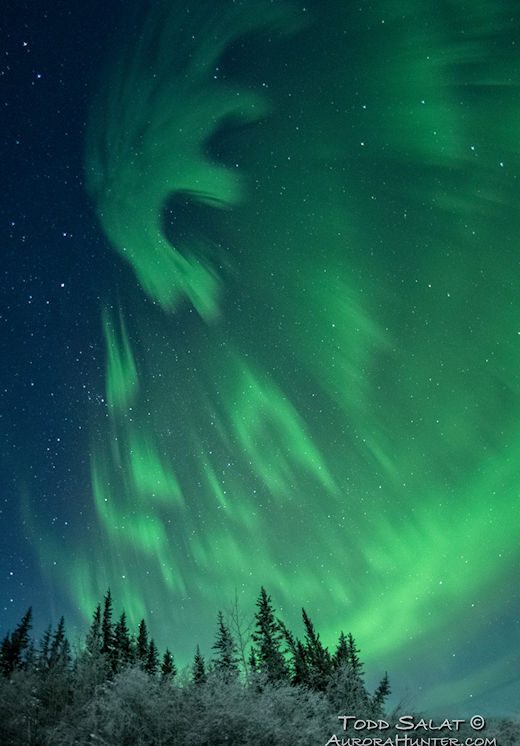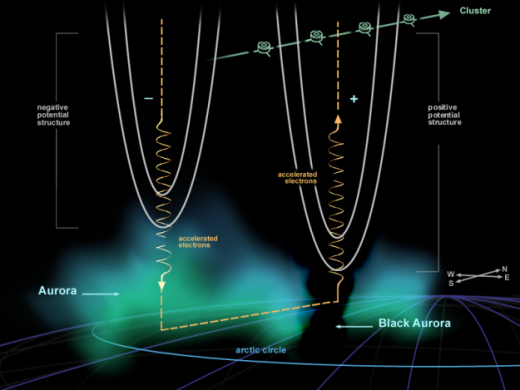SPACE WEATHER!
SOLAR STORMS ARE DRIVING FARMERS CRAZY: Planting season is a hectic time for farmers. For many, it means working through the night using GPS-guided tractors to plant thousands of acres in a short period of time. The season was in full swing on May 10, 2024, when the biggest solar storm in decades struck Earth.
"Our tractors acted like they were demon possessed," says Elaine Ramstad, a Spaceweather.com reader and aurora chaser who helps out on a family farm in Northern Minnesota. "All my cousins called me during the May 10th storm to tell me that 'my auroras' were driving them crazy while they were planting."

Northern Lights over the Ramstead family beet farm on May 10, 2024
Modern farmers rely heavily on GPS. Guided by satellites, smart tractors can work around the clock, seeding perfectly straight rows with precise amounts of seed and fertilizer. When harvesting time comes, the tractors can return to exactly the same spots to pick the crops.
This kind of precision agriculture has become widespread. "I would guess 80% or more of all farmers in the Midwest use at least basic GPS for something--whether it's auto-steer or yield mapping," says Ethan Smidt, a service manager for John Deere. "At least 50% of all farmers are VERY reliant on GPS and use it on every machine all year long."
Solar activity poses a growing problem for farm-tech. During big solar storms, a layer of Earth's atmosphere called "the ionosphere" fills with bubbles, waves, and turbulence, which severely distort radio signals from GPS satellites. tractors and harvesters can't lock on, which stops them in their tracks. Or the signal may be garbled, causing them to juke back and forth.

Crooked rows in Iowa caused by a solar storm.
May 10th wasn't the end of it. Tractors went off-course again during the autumnal storms of Oct. 6th and 10th.
Ramstad was helping her cousins defoliate sugar beets on Oct. 6th when her tractor started acting up: "As the aurora activity began, my GPS was off by close to a foot. Twice while on Autosteer, the tractor danced a row to the left, to the right — and then the defoliator was off a row, so I had to loop around and start over. By nightfall, there was no controlling the Autosteer."
Indiana farmer Michael Spencer had a similar experience: "This fall was the first time I was able to see the aurora. My hair was standing on end from the beauty, however, it did make the John Deere tech dance. When the storms were strongest around Oct. 7th, my tractor's Autosteer system would 'jump the line'--meaning, the tractor would make a quick jolt left or right and I would have to manually reset."

A beet defoliator--an example of massive hardware thrown off course by solar activity.
It doesn't take an historic solar storm to cause problems. While the May 10th storm was a rare and extreme category G5, storms in October were much more common category G3 and G4 events. All of them sent massive pieces of hardware off course.
NASA says that Solar Maximum has arrived, and it could last for another 1 to 2 years, confusing tractors again in 2025 and 2026. Stay tuned for more crooked rows. Solar storm alerts: SMS Text













